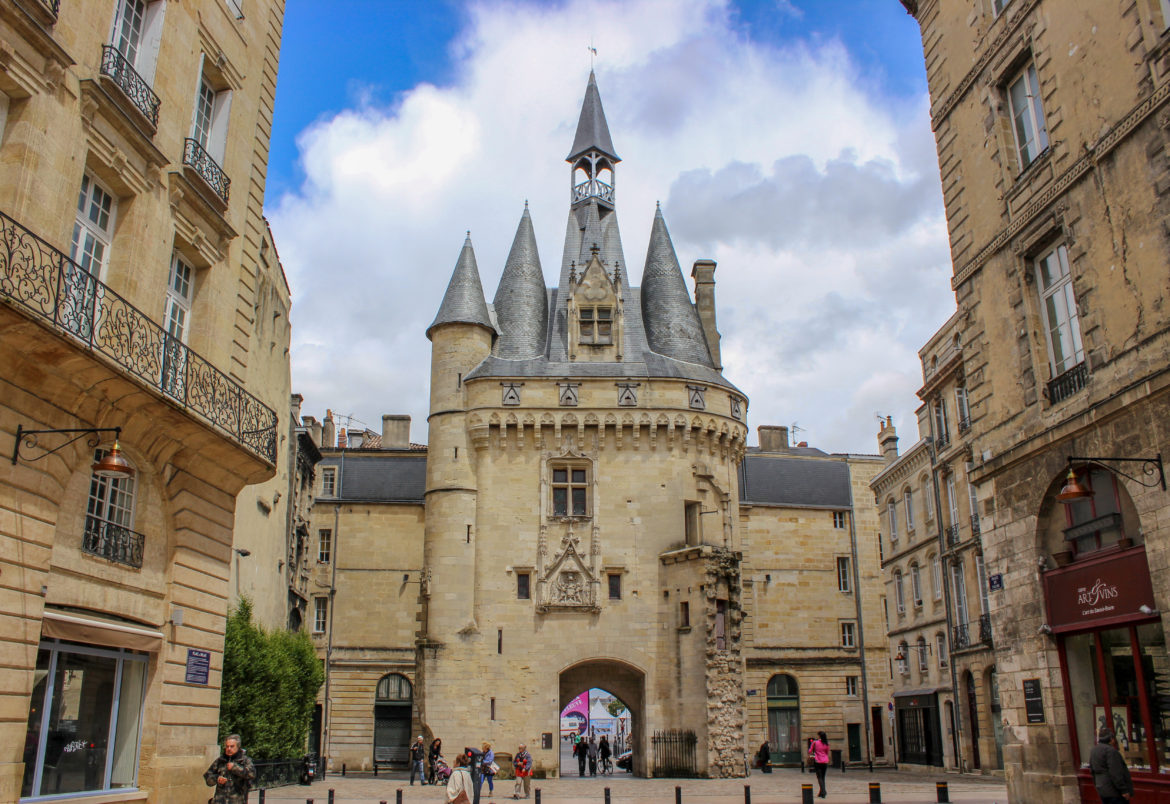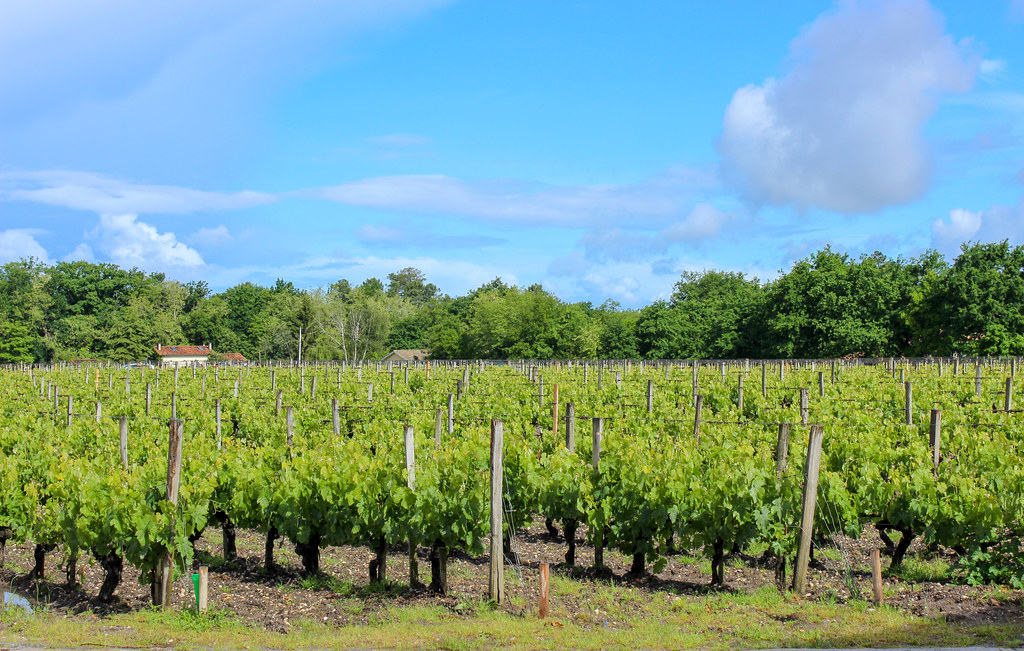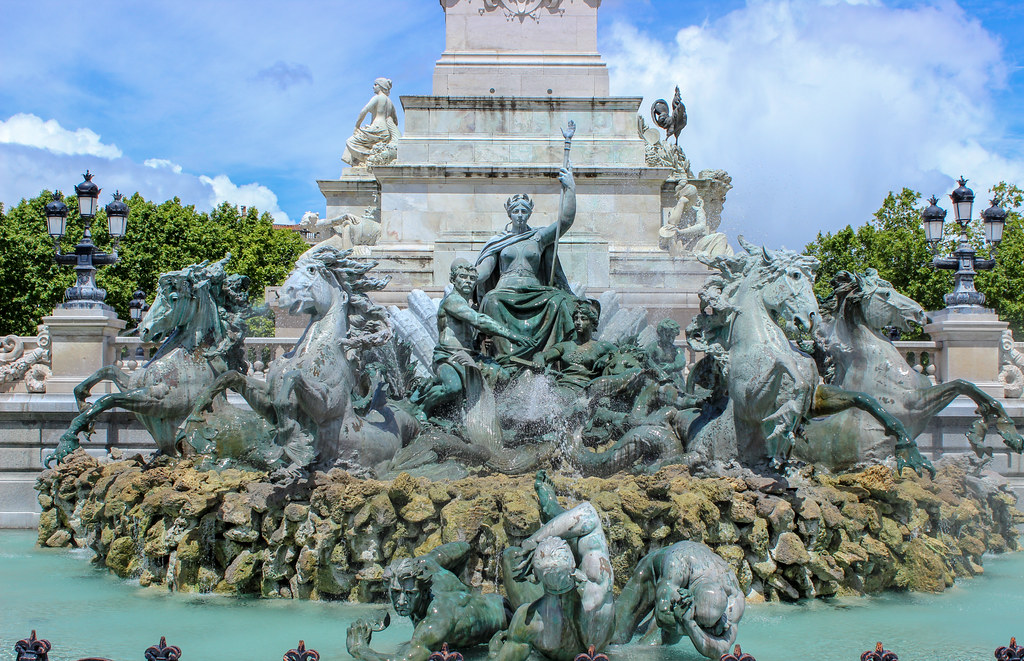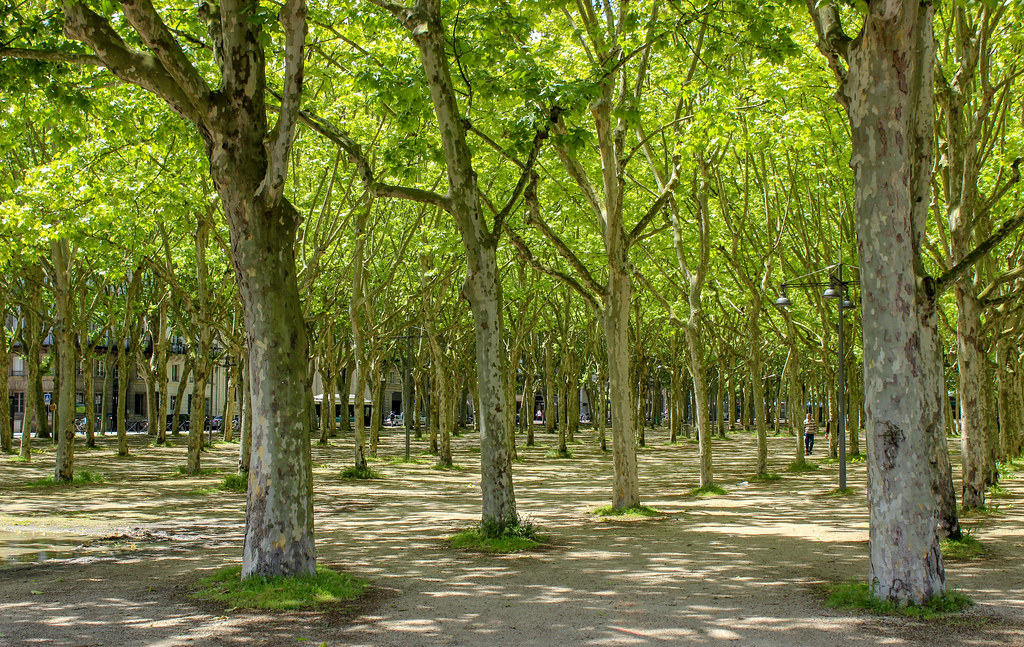This fertile region is a world capital of wine. Even more, the Bordeaux Old Town has some of the world’s most stunning 18th century architecture. As an Acupuncturist-at-Sea, I disembarked from the port, Le Verdon on the Bay of Biscay. From here I took the bus to Bordeaux region for wine-tasting and a walking tour of Bordeaux Old Town. Here’s my experience and tips for enjoying Bordeaux Wineries and Old Town.
Bordeaux is a world capital of wine with about 10,000 wine-producing estates (chateaux) producing white and red wines. Rome was the first to introduce the grape vine to Bordeaux in the first century. The region extends 60 miles around the city along the 3 rivers: Garoone, Gironde and Dordogne. This makes up Europe’s largest estuary as an ideal environment for winemaking. Also, the temperate climate with high humidity from the Atlantic Ocean is optimal for wine production.
Bordeaux Old Town is spread out on a curve along the River Garonne. It has been listed as World Heritage by UNESCO since 2007 under the name Port de la Lune (Port of the Moon). The 350 historic monuments, mainly were created during The Age of Enlightenment. Even more, this makes it the 2nd most listed monuments in France after Paris. Overall, the “Pearl of Aquitaine” has beautiful architecture, narrow streets, squares, boulevards and monuments, dating back to the18th century.
Bordeaux Wineries &
Old Town Walking Tour
Chateau de Tertre
First, we went to the Chateau de Tertre for wine-tasting. At this thousand-year-old estate we observed the vineyards, wine cellar and learned about winemaking at the Margaux appellation. The major grape variety is Cabernet Sauvignon. Other blends included here are the Merlot, Petit Verdot, Cabernet Franc and Malbec. What a wonderful way to start the day.
Bordeaux Old Town
After wine-tasting in the morning, the Bordeaux Old Town was the perfect way to spend the afternoon. The Old Town is a wonderful place for a historic walking tour, amidst its architecture and landscapes, inspired from the 18th century’s Age of Enlightenment. Plus, it’s all compact and within close proximity. Here are highlights from my walking tour.
Place de la Bourse:

This magnificent square has become the symbol of the city since built in the 1720’s on the left bank of the Garonne. This classic French architecture is an exquisite design, with a water mirror in front reflecting Place de la Bourse. Its sculptures symbolize Mercury bringing commerce and Minerva protecting the arts. Obviously, this is a fabulous place for photos!
Grosse Cloche “Big Bell”:
Inside this Belfry is a quote: “I ring the hours and my voice is a call to arms…I sing for happy events and weep for the dead.” Since 1775 this bell rang for many purposes. The gateway also was defensive and served as a prison. Also, the gateway is open for visits to its intriguing dungeons.
Porte Cailhau – Bordeaux Wineries and Old Town:
This is a vestige of the old walls and magnificent design, transitioning from Gothic to Renaissance. Dating back to 1495, it was both a triumphal arch and part of defense. You can go inside for a panoramic view of the Garonne.
Place de la Victoire:
This spectacular square is a gateway to the city with a blend of old and new architecture. It’s bustling with students as part of the college quarters. The iconic triumphal arch known as the Porte d’Aquitaine stands here, where the former city gate used to be.
In contrast, the striking modern sculpture of a column recognizing viticulture in Bordeaux stands in the square.
rue Sainte-Catherine:
This 1.2 km long pedestrian street is the main shopping street in Bodeaux and also the longest pedestrianized streets in Europe. It runs from Victoire Place de lato Grand Théâtre. This commercial area has the stereotypical international brands in the upper part, with the more hip and bohemian-style boutiques further down the street.
Grand Théâtre de Bordeaux:
This opera house was built as a temple of the Arts and Light, with a neo-classical style. Its portico has 12 Corinthian style columns supporting 12 statues representing the 9 Muses and 3 Goddesses. Inside the ceiling showcases a large fresco painted by Jean Baptiste Claude Robin.
Esplanade de Quinconces:
This is the largest city square in Europe. It was designed in 1820 to prevent rebellion with guns turned towards the centre. It’s shaped like quincunxes, and therefore the name. Plane trees immaculately line up in the square. Now, the square is the most important transportation hub, including the tram system. The square’s principal Base of Girondists Monument commemorates the Girondists who fell victim of the Reign of Terror during the French Revolution. Overall, it has a large pedestal framed with two basins, ornate with bronzed horses and troops, with a large column and statue on top representing liberty.
Basilica of Saint Michel:
The Gothic Basilica of Saint Michel was built between the 14th and 16th century in the heart of the ancient Saint Michel quarter.
Intriguingly, this 114 m high bell tower referred to as “La Fleche’ or The Spire is free standing instead of on top of the church. Its unique history includes its exhibits of mummies in the late 18th century.
Quais de Bordeaux:
The left bank of the Garonne is a beautiful waterfront. The expansive riverside promenade follows the front of grand neo-classical buildings. Also, there are colorful flowerbeds, plane trees and benches to take in the scenery and atmosphere.
Overall, Bordeaux Wineries and Old Town
Bordeaux is a romantic city expressing the historic Age of Enlightenment and Viticulture. Where else can visitors indulge all the senses for exquisite culture, art, food and wine? It’s an inspiring region of the world full of elegance and beauty for a splendid getaway.
Read More!
The Iconic Rock of Gibraltar Highlights Tour
Incredible Cadiz Walking Tour & Main Attractions







